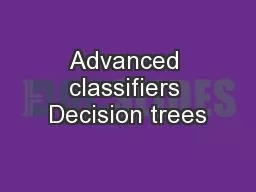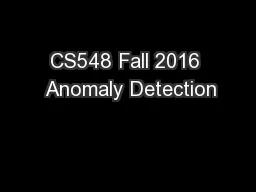PPT-CS548 Fall 2018 Decision Trees Showcase
Author : bubbleba | Published Date : 2020-07-04
by Holly Nguyen Hongyu Pan Lei Shi Muhammad Tahir Showcasing work by Themis P Exarchos Alexandros T Tzallas DinaBaga Dimitra Chaloglou Dimitrios I Fotiadis Sofia
Presentation Embed Code
Download Presentation
Download Presentation The PPT/PDF document "CS548 Fall 2018 Decision Trees Showcase" is the property of its rightful owner. Permission is granted to download and print the materials on this website for personal, non-commercial use only, and to display it on your personal computer provided you do not modify the materials and that you retain all copyright notices contained in the materials. By downloading content from our website, you accept the terms of this agreement.
CS548 Fall 2018 Decision Trees Showcase: Transcript
Download Rules Of Document
"CS548 Fall 2018 Decision Trees Showcase"The content belongs to its owner. You may download and print it for personal use, without modification, and keep all copyright notices. By downloading, you agree to these terms.
Related Documents














